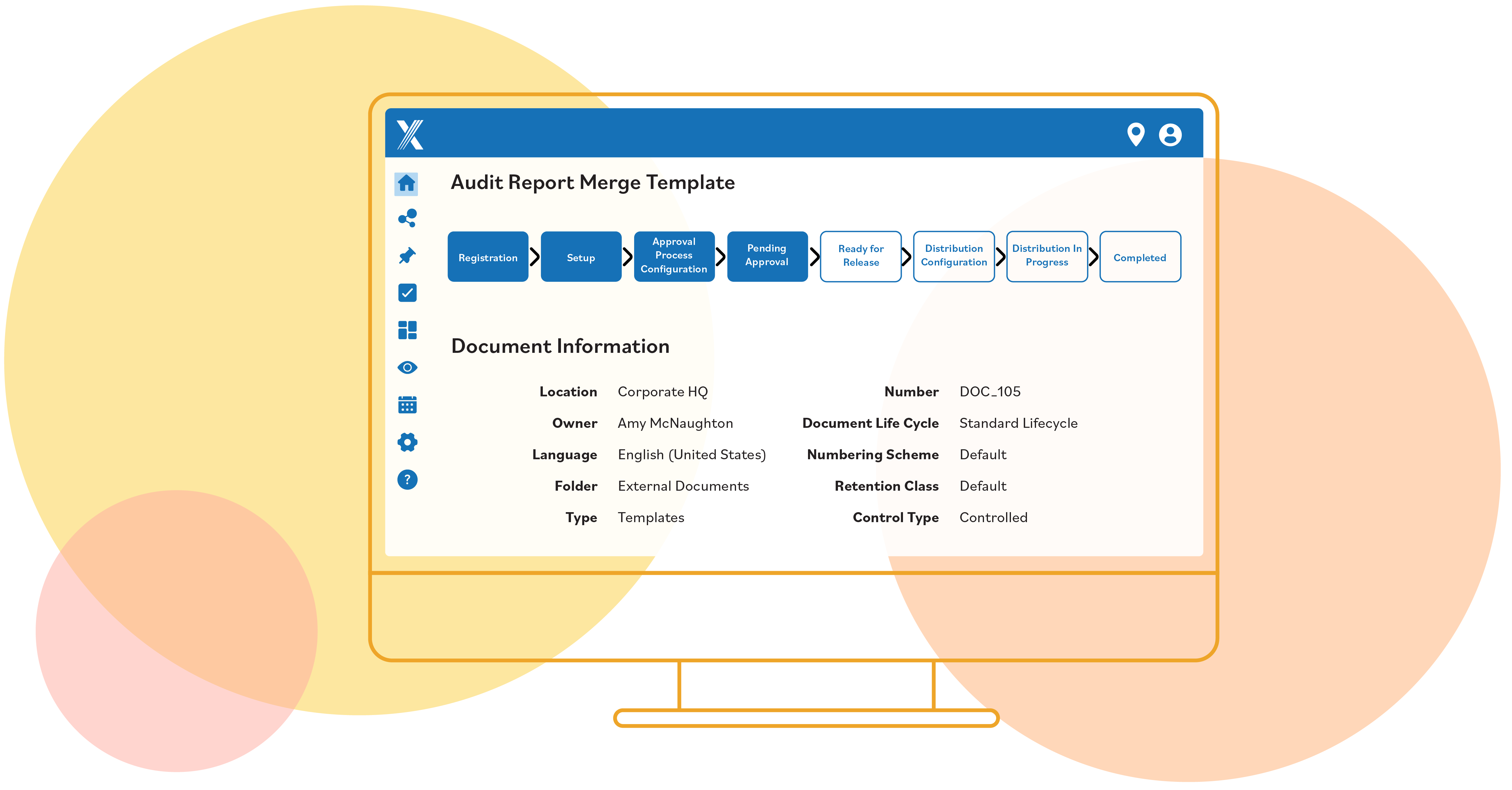Process Improvement and Safety Culture: Building a Better Workplace
November 25, 2021

A conversation with Scott Gaddis, Vice President & Global Practice Leader, Safety and Health at Intelex Technologies, on how a safety culture can be strengthened through health and safety-related process improvements.
In November 2021, Scott Gadds virtually presented to a large H&S International audience on the value of process improvement within organisations, explaining how effective processes can not only reduce workplace incidents but can ultimately lead to saving lives. To learn more around the importance of building safety culture, the tools needed to do so, and what the future may look like for cultural safety processes, please take a read below and watch the webinar “Leveraging Safety Culture through H&S Process Improvement” here.
Q1. Can you tell us a bit about your background and what attracted you to Intelex?
Scott Gaddis: I began my career in 1989 after finishing up with degrees in Occupational Safety and Health from Murray State University. I’ve been leading EHS for more than 30 years. I began with the GE Company manufacturing large industrial AC/DC motors. I then transitioned to a role with Kimberly Clark Corporation, starting as a site-level EHS director at a paper mill and ending 18 years later leading the Corporate safety and health teams. After that, I spent five years leading the corporate EHS pharma manufacturing teams at Bristol Myers Squibb and then a short stint leading a packaging company. It’s a long way to say; wow, I’ve been doing this a long time, and through the years, I’ve gained experience and hopefully more wisdom than I had at the beginning.
My attraction to Intelex is twofold. First, I was the practitioner trying to lead EHS programs for manufacturing companies, and I struggled to understand EHS data. I had information siloed at different sites and on different teams. I was working with people with differing values to understand the data, which became an issue. I spent a lot of time and money simply trying to collect information and understand it to make timely decisions. Joining Intelex allowed me to influence our value for product development.
I was also attracted because Intelex had a vision of understanding an EHS practitioner’s work from someone who had led site-level and enterprise-level programs. I spend a lot of time coaching and mentoring our teams. It is safe to say I have an organic role that requires flexibility. Still, I am just one of over 500 Intelexians that want to end fatalities in the workplace. We have tremendous synergies and believe our products are part of a process that aids practitioners in doing that. Every Intelexian has a mission to return people home safe and healthy to their families.
Q2. What do you enjoy most about your role at Intelex?
We have a fantastic team of talented people at Intelex. I am often in awe of what our teams do to support our clients and even our values to care for, hopefully, future clients. Coaching and mentoring are enjoyable because I am the chief EHS practitioner at Intelex. There’s an abundance of questions about my years leading EHS programs.
Understanding a practitioner’s view is vital in how we create the product. Our teams often translate what they hear from a practitioner to delight our customers with our product. I also enjoy speaking with EHS professionals worldwide via customer engagements, conferences, webinars, and roundtable events. I get a chance to discuss information that might positively impact how they do their jobs.
Q3. A significant portion of your time involves presenting to global audiences around the health and safety challenges faced by organisations and how Intelex’s technology can help respond to these challenges. Most recently, you presented at an H&S International hosted webinar on the topic of leveraging a safety culture through process improvement. Can you talk through what is meant by the term ‘safety culture’ and why this topic is of relevance to cross industry organisations today?
There has always been debate about safety culture and the premise that “aren’t we just in the business of building good organizational culture?” Culture is often defined as the consistent, observable pattern of behavior we desire to see. With that said, when we think about safety culture, the difference is what I have learned leading EHS programs: Safety culture is more focused at a granular level where we explore what we believe about ourselves, our values, and our perceptions about the job risks we face.
Over time, I’ve learned that everyone comes into an organization with unique risk profiles and differing levels of risk they are willing to take to do their job. Observing the work system and a collective commitment from management alongside workers is required to mitigate these at-risk behaviors. Leaders need to lead the organization with safety as the chief value. It means safety reigns above any other business priority. There’s no job task more important than the worker’s well-being.
However, having a high safety value is not enough. The organization must be supported with solid H&S programming to ensure a safe work environment. Safety culture is much more than observation and feedback, and it’s far more than “how I feel about safety.” Safety culture is a cohesive focus that protects the physical work environment, supports knowledge and skills development. It embraces high safety values and expectations and fosters interdependence so that everyone owns part of the H&S process.
Q4. How has the pandemic exacerbated the requirement for an improved safety culture across all industries and all parts of the world?
It may not be a giant leap to say the pandemic has changed organizational culture, at least for the foreseeable future. Some workforces will likely work remotely going forward, and that’s concerning because it’s challenging to engage people via a desktop. We have the other extreme where some workforces are experiencing unprecedented demands at work, such as transportation and healthcare.
Every industry where positive safety culture is critical to positive outcomes should be concerned. The pandemic has changed our perceptions of risks and how best to mitigate these risks. The pandemic has threatened what workers believe and their values that have long been aligned more closely to the organizations where they work. In many cases, the priority to protect ourselves has become very personal, and the different information streams have created a lot of confusion and even mistrust. Thus, improving culture as we advance will require a lot of patience, honesty, empathy and an in-depth assessment of the management system to understand where the errors in the work system reside.
Then, I would recommend improving with programs that focus on easing cultural tension like scheduled one-on-one discussions, Gemba walks, and even improved safety policies. Overall, workers want to feel safe in their “new” work environment.
Q5. Technology is impacting the rate at which, and way in which, hazards are identified, and safety measures are initiated. Based on the trajectory of technological advancements, what innovations can we expect to see in the next five years that will impact the way H&S is approached and responded to?
I believe there’s still a significant need to innovate using safety and health management software. It’s been available for well over a decade, but as organizations get faster and more complex, there is a need to break down data silos and begin to see information more efficiently and in a way that leverages better decision-making. Software answers this concern. The ability to use business intelligence tools to find process errors, define trends and prescribe programming is technology that is available and should be considered.
Looking forward, the Internet of Things (IoT) has opened the door for much innovation in the health and safety space. I expect to see additional growth in sensor technology that will monitor things as simple as environmental conditions to more complex activities, such as alerting machines and workers to operational hazards and in real-time. In addition, we will see technology used to monitor more workplace activity, allowing better predictive programming features, stopping some activities and responding because of data before incidents occur. These will be game-changers for the H&S practitioner.
Q7. Can you talk through the concept of ‘normalization of deviance’ and explain why it’s such an important consideration for organizations today?
Normalization of Deviance is defined as “The gradual process through which unacceptable practice or standards become acceptable. For example, a worker performing their work task and looking for shortcuts to make the job faster or more comfortable, and is allowed to repeat the substandard actions, such behavior becomes the social norm for the organization and the risk is accepted.” Sadly, it’s not until there’s a loss that we often question these actions.
For example, the Shuttle Columbia came apart due to damage in its heat shield as it re-entered the earth’s atmosphere. An investigation indicated that NASA had fallen prey to the normalization of deviance by not stopping the shuttle program the first time to remedy an ongoing problem of damaged heat shields. The situation became normalized over time, and because the agency had not yet sustained loss, it was allowed to continue.
Some of the biggest failures studied over the last decade — Deepwater Horizon, Dhaka Garment Factory, Upper Big Branch Coal mine and West Fertilizer Company — had similar findings. Deviation slowly began, and shortcuts gradually became the norm. A caveat is that often we feel lucky. Still, at some point, there are one or two complicating factors, and we sustain a significant loss.
Q8. When considering safety processes, how can an organisation break these considerations down to ensure all factors that could play a part in preventing future loss are accounted for?
In EHS, just as in any management system, process variability within the work system must be controlled to attain and sustain desired performance results. Though not an exhaustive list, there are four significant areas of control: the physical work environment, knowledge and skills development of the workforce, employee behavior and management accountability. Look for uncontrolled variables as factors that intervene between the design of a system and the production or service process. These are key areas that could result in conditions where errors are more likely to occur.
Q9. What advice would you give to an organisation who feels competent in their processes and proud of their EHS compliance?
First, it is great to have confidence in your process competence and experience success like compliance. It indicates that your management system is systematic, explicit, and comprehensive for managing safety risks. I’ve often spoken a lot about the idea of “Thinking Globally and Acting Locally.”
The EHS practitioner should look externally at other leading EHS programs for best practices. Consider adding best practice program features to keep the management process moving forward towards best control. A sound EHS management system is woven into the fabric of an organization. It becomes part of the culture and how people do their job but is always seeking growth. My advice would be to not rest on where you are today but where you want to be next year and increase programming in areas that increase worker partnership.
Q10. To conclude, what are your predictions on how safety culture broadly will evolve over the next decade?
As I’ve mentioned, I think we will see the workplace get faster and more complex, which will promote much error in the work system. It will be challenging to find and identify the core causal factors of these errors before a loss occurs. Therefore, it will be prudent to move away from corrective actions directed at worker behavior and focus more on recognizing the errors within the management system.
My prediction is that for the EHS professional, deploying a systems-based approach that fosters an understanding of behaviors and the complex relationships between people, their machines, and their work environment will be required.





